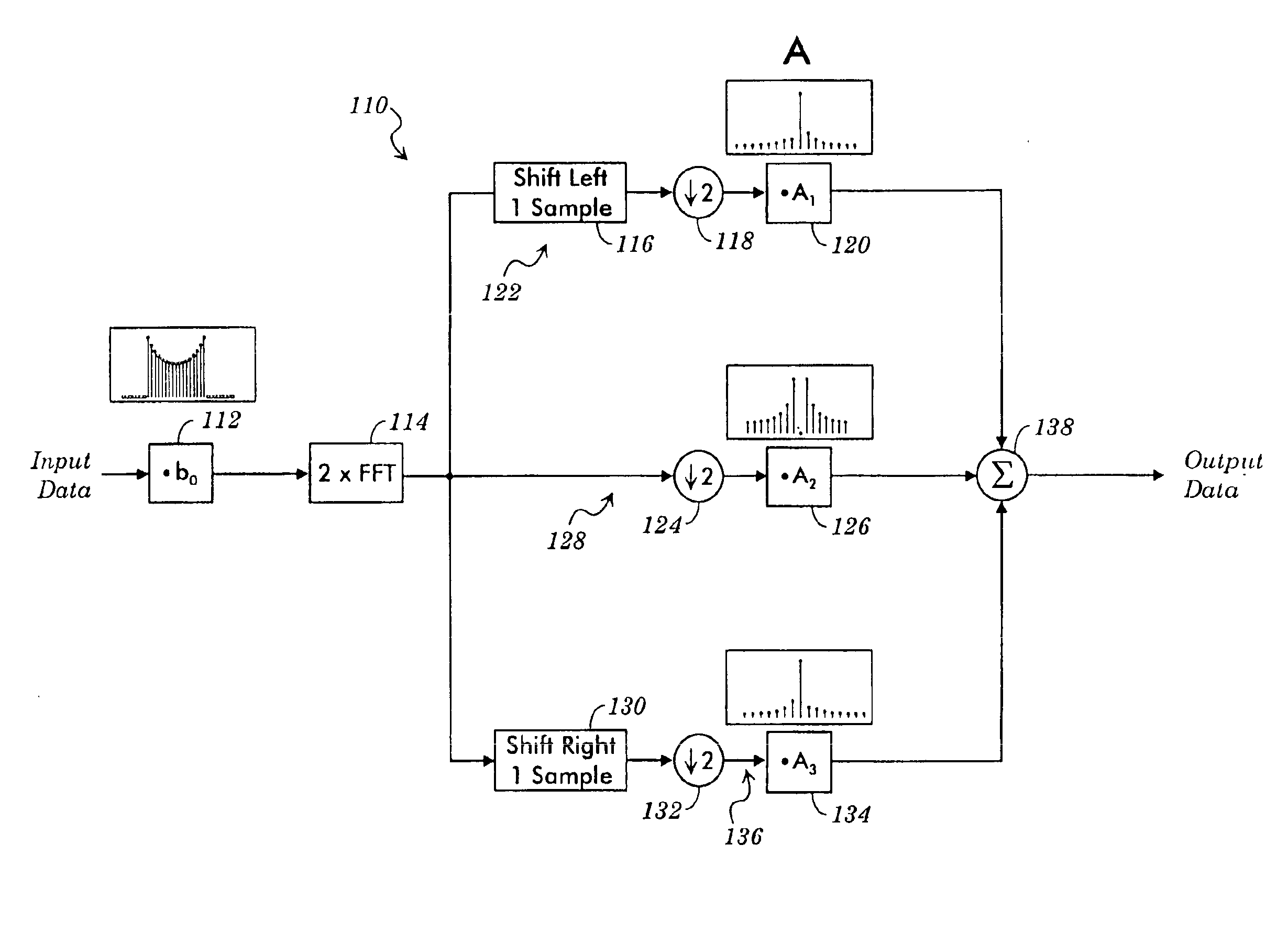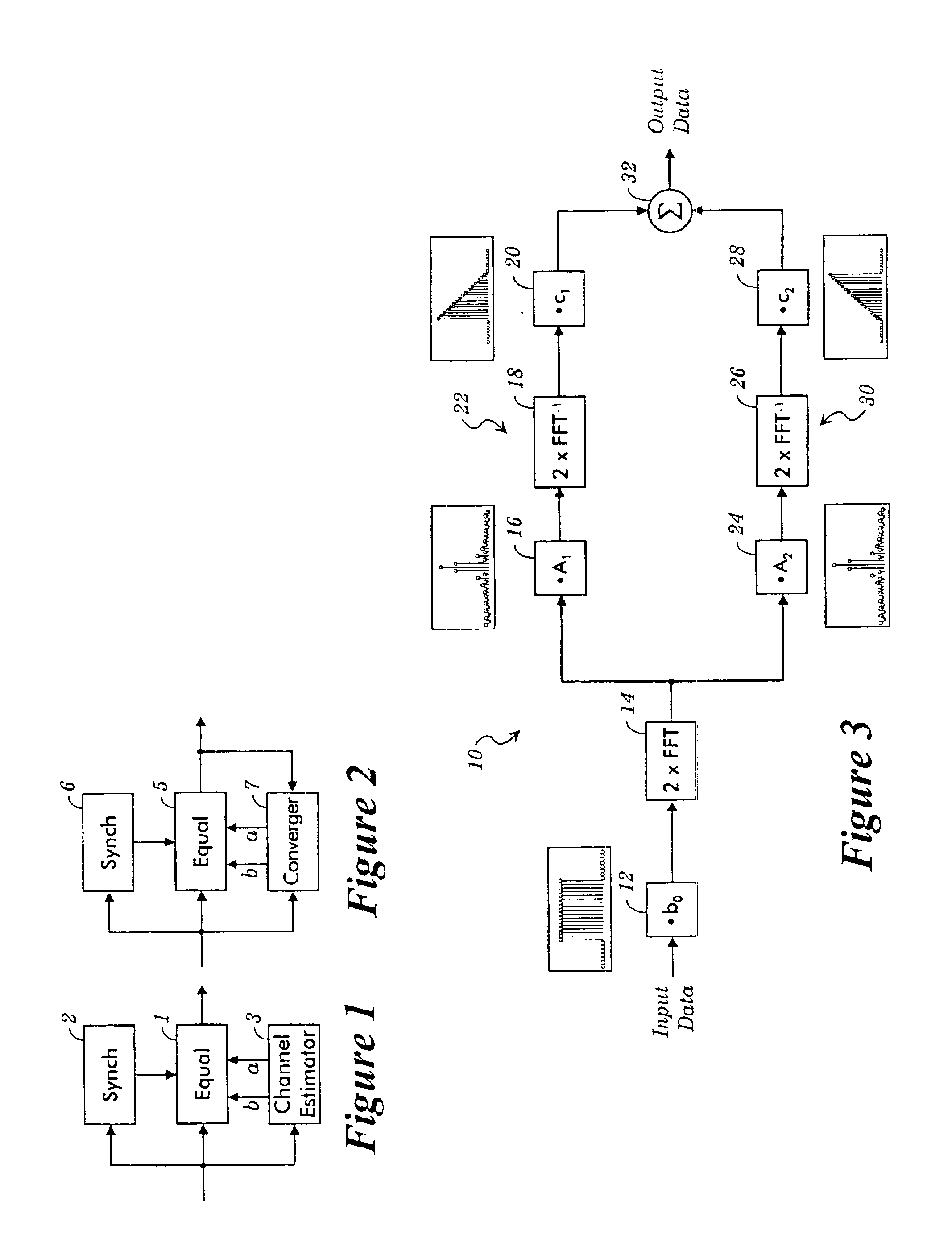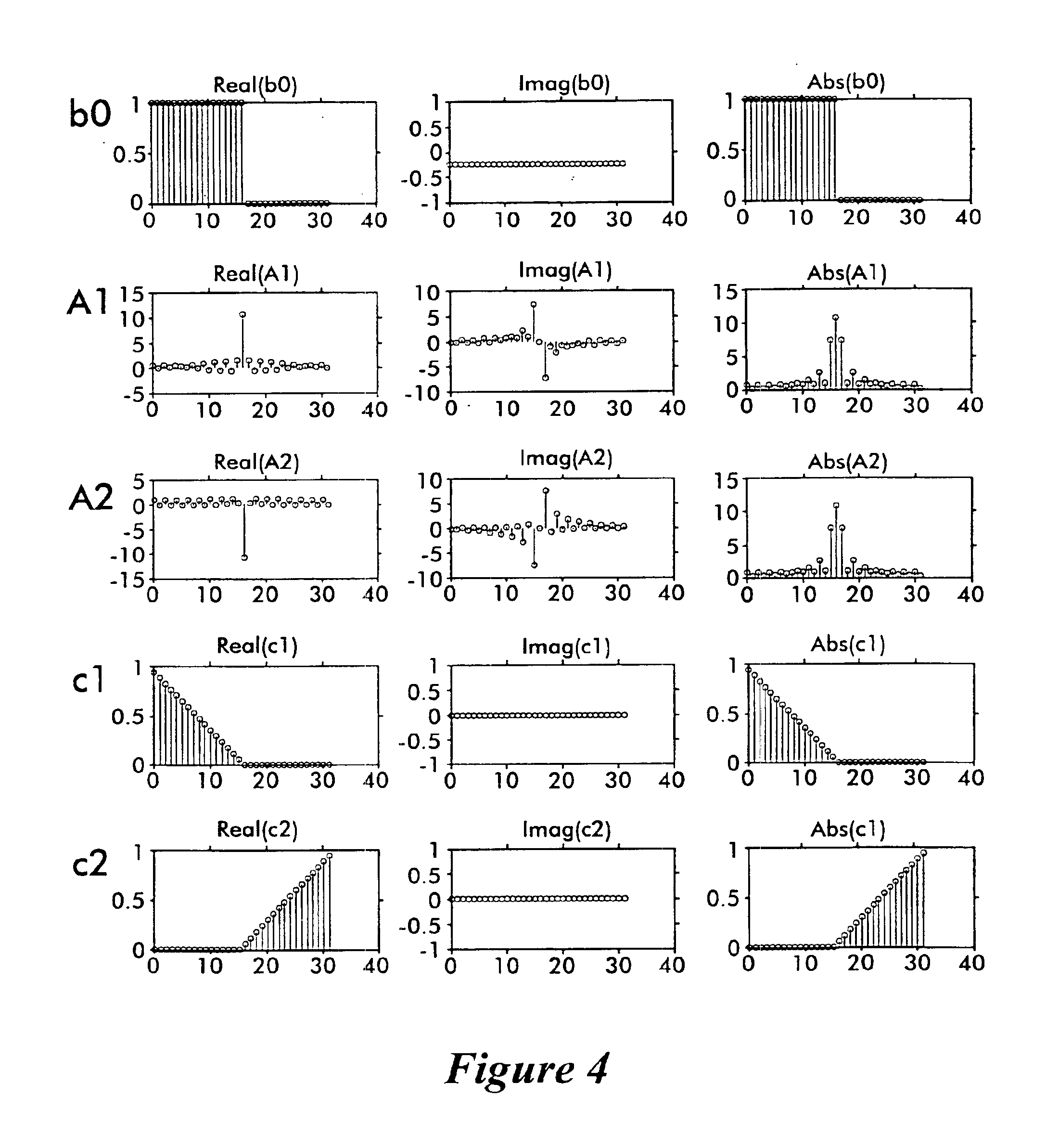Multipath ghost eliminating equalizer with optimum noise enhancement
a multi-path equalizer and enhancement technology, applied in the field of equalizers, can solve the problems of inability to eliminate a 100% ghost, inability to use a matched filter, and low data rate associated with spread spectrum systems, so as to achieve the effect of reducing noise enhancemen
- Summary
- Abstract
- Description
- Claims
- Application Information
AI Technical Summary
Benefits of technology
Problems solved by technology
Method used
Image
Examples
first embodiment
[0034]a synchronization and coefficient control is shown in FIG. 1. As shown in FIG. 1, an equalizer 1, such as any of the equalizers described below, receives data and ghosts of the data. The data, for example, may be transmitted in the form of data blocks. The equalizer 1 processes the data blocks and ghosts in order to eliminate ghosts. A synchronizer 2 synchronizes the equalizer 1 to the incoming data blocks using any conventional synchronizing technique. A channel estimator 3 estimates the characteristics of the channel through which the data blocks are transmitted in order to control the b coefficients in width and to control the a coefficients in width, magnitude, and phase so as to substantially eliminate ghosts.
[0035]The channel estimator 3, for example, may be any of the channel estimators that are conventionally used in COFDM systems. Such channel estimators may be used to estimate the magnitude of ghosts, and the time interval between data blocks and their ghosts. The ma...
second embodiment
[0036]a synchronization and coefficient control is shown in FIG. 2. As shown in FIG. 2, an equalizer 5, such as any of the equalizers described below, receives data and ghosts. The data, for example, may be in the form of data blocks. The equalizer 5 processes the data blocks and ghosts in order to eliminate the ghosts. A synchronizer 6 synchronizes the equalizer 5 to the incoming data blocks using any conventional synchronizing technique. A converger 7 compares the input and output of the equalizer 5 and adjusts the a coefficients based upon the comparison results in a direction to substantially eliminate ghosts. The converger 7 also determines the time interval d between data blocks and ghosts in order to control the width of the b coefficients. The converger 7 is described in more detail below.
Equalizers
[0037]A first equalizer embodiment, i.e., a dual path equalizer 10, is shown in FIG. 3 and includes a pre-processor 12 and a 2×FFT 14 (i.e., a twice-the-data-block-length FFT 14) ...
fourth embodiment
[0098]the converger 7, i.e., an adaptive coefficient control 240, may be provided for the triple path equalizer 80 and is shown in FIG. 16. The adaptive convergence control 240 includes a conjugater 242 which conjugates the data from the 2×FFT 84. The output of the conjugater 242 is supplied to first, second, and third correlators 244, 246, and 248. An error generator 250 generates an error based upon the output of the triple path equalizer 80. The adaptive convergence control 240 includes an up sampler 252 which up samples by two the output of the error generator 250 in order to thereby reverse the effects of the down sampler 106. The adaptive coefficient control 240 also includes an inverse first post-processor 254, an inverse second post-processor 256, and an inverse third post-processor 258. The inverse first, second, and third post-processors 254, 256, and 258 produce an inverse of the first, second, and third post-processors 88, 94, and 100 of the triple path equalizer 80. The...
PUM
 Login to View More
Login to View More Abstract
Description
Claims
Application Information
 Login to View More
Login to View More - R&D
- Intellectual Property
- Life Sciences
- Materials
- Tech Scout
- Unparalleled Data Quality
- Higher Quality Content
- 60% Fewer Hallucinations
Browse by: Latest US Patents, China's latest patents, Technical Efficacy Thesaurus, Application Domain, Technology Topic, Popular Technical Reports.
© 2025 PatSnap. All rights reserved.Legal|Privacy policy|Modern Slavery Act Transparency Statement|Sitemap|About US| Contact US: help@patsnap.com



